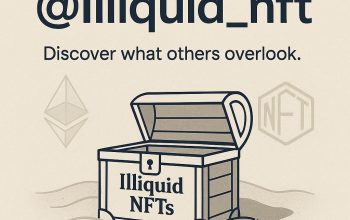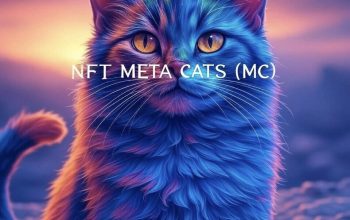The Evolution and Impact of NFTs in the Web3 Ecosystem
The Rise of NFTs
Imagine a world where digital art, music, and even tweets can be owned, traded, and verified with the same certainty as physical assets. Welcome to the world of Non-Fungible Tokens (NFTs). These unique digital items, verified using blockchain technology, have sparked a revolution in how we interact with digital content. NFTs are not just about owning a piece of digital art; they represent a shift towards a more decentralized and transparent digital economy.
The journey of NFTs began with the advent of blockchain technology, which provided a secure and transparent way to record transactions. The first NFTs were simple digital collectibles, but their potential quickly became apparent. Today, NFTs encompass a wide range of digital assets, from virtual real estate to in-game items, and even tweets. The NFT market has seen exponential growth, with some NFTs selling for millions of dollars, highlighting their value and potential.
The Birth of NFTs
The concept of NFTs emerged from the need to create unique digital assets that could be owned and traded. The first notable NFT project was CryptoPunks, launched in 2017. These pixelated portraits of unique characters were minted on the Ethereum blockchain and quickly gained a cult following. Since then, the NFT space has exploded, with new projects and collections being launched almost daily.
The NFT Boom
The NFT boom can be attributed to several factors, including the growing interest in cryptocurrencies, the rise of decentralized finance (DeFi), and the increasing demand for digital collectibles. The COVID-19 pandemic also played a role, as people turned to digital entertainment and collectibles during lockdowns. This confluence of factors created a perfect storm for the NFT market, leading to its rapid growth and widespread adoption.
The Role of NFTs in the Web3 Ecosystem
Web3, often referred to as the decentralized web, is built on the principles of blockchain technology, aiming to create a more open, transparent, and user-centric internet. NFTs play a crucial role in this ecosystem by providing a means to verify ownership and authenticity of digital assets. This is particularly important in a world where digital content can be easily replicated and distributed.
Decentralized Ownership
One of the key advantages of NFTs is their ability to provide decentralized ownership. Unlike traditional digital assets, which are often controlled by centralized platforms, NFTs are stored on a blockchain, making them resistant to censorship and manipulation. This decentralization empowers creators and owners, giving them full control over their digital assets.
Interoperability and Utility
NFTs are not just static digital items; they can be integrated into various applications and platforms, enhancing their utility. For example, NFTs can be used in gaming to represent in-game items, in virtual worlds to represent real estate, and in decentralized finance (DeFi) to represent financial assets. This interoperability makes NFTs a versatile tool in the Web3 ecosystem.
The NFT Community and Collections
The NFT community is a diverse and passionate group of individuals who are driving the adoption and innovation of NFTs. This community includes artists, developers, investors, and enthusiasts who are constantly exploring new ways to leverage NFTs. The NFT community is also known for its collaborative spirit, with many projects and initiatives being developed through collective effort.
Notable NFT Collections
Several NFT collections have gained significant attention and value. For instance, the CryptoPunks collection, which features pixelated portraits of unique characters, has become one of the most valuable NFT collections. Similarly, the Bored Ape Yacht Club (BAYC) has gained a cult following, with its NFTs being used as profile pictures and status symbols in the crypto community.
The Impact of NFTs on Creators
NFTs have provided a new revenue stream for creators, allowing them to monetize their digital work directly. This has democratized the creative industry, enabling artists, musicians, and writers to reach a global audience without the need for intermediaries. The transparency and immutability of blockchain technology ensure that creators receive fair compensation for their work, fostering a more equitable creative economy.
The Future of NFTs
As we look to the future, the potential of NFTs seems limitless. The integration of NFTs with other emerging technologies, such as virtual reality (VR) and augmented reality (AR), could create immersive and interactive digital experiences. Additionally, the development of real-world asset (RWA) tokens, which represent physical assets on the blockchain, could further expand the use cases of NFTs.
Real-World Assets and NFTs
Real-world assets (RWAs) are physical assets that are tokenized on the blockchain, allowing them to be traded and managed as NFTs. This innovation has the potential to revolutionize industries such as real estate, art, and collectibles, by providing a more efficient and transparent way to manage and transfer ownership. Projects like $Pendle and $Plume are at the forefront of this trend, exploring new ways to integrate RWAs with NFTs.
The Role of NFTs in the Metaverse
The metaverse, a collective virtual shared space, is another area where NFTs are expected to play a significant role. In the metaverse, NFTs can represent virtual real estate, avatars, and other digital items, creating a fully immersive and interactive digital world. As the metaverse continues to develop, NFTs will be crucial in defining ownership and value within this new digital frontier.
Conclusion: The Enduring Legacy of NFTs
In conclusion, NFTs have emerged as a transformative force in the digital world, revolutionizing the way we perceive and interact with digital assets. Their role in the Web3 ecosystem, providing decentralized ownership and interoperability, is crucial for the development of a more open and user-centric internet. The NFT community, with its passion and innovation, is driving the adoption and evolution of NFTs, creating new opportunities for creators and investors alike.
As we look to the future, the potential of NFTs seems boundless. The integration of NFTs with emerging technologies and the development of real-world asset tokens will further expand their use cases, creating new and exciting possibilities. The enduring legacy of NFTs lies in their ability to empower creators, foster innovation, and redefine the digital landscape.





